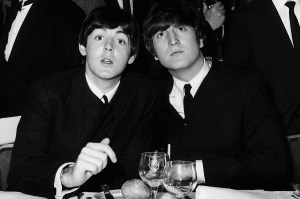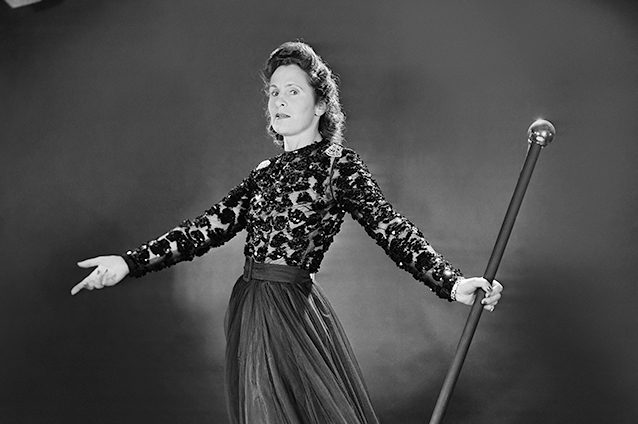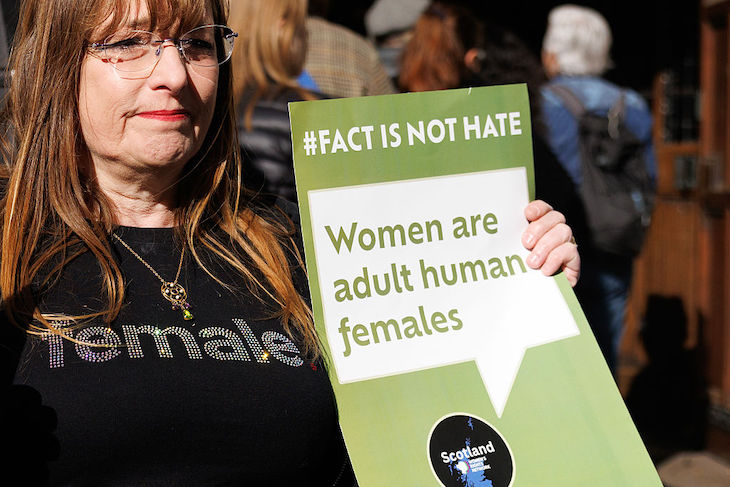There is an African bird called the ox-pecker with which Germaine Greer, conversant as she is with the natural world, will doubtless be familiar. Oxpeckers ride on the backs of large mammals — giraffes, buffalo, wildebeest and the like — feeding off their lice. Once thought an example of mutualism, the relationship between diner and host is now understood to be more complex than this. On the one hand oxpeckers reduce the larvae, and on the other they jab their beaks into any open wounds on the hide in order to keep the blood fresh.
Elizabeth Kleinhenz is Germaine Greer’s ox- (or rather Oz-) pecker. A few years younger than Greer, who is now 79, and raised in the same Melbourne neighborhood, Kleinhenz has been pecking away in the archives of the University of Melbourne where, in 2013, Greer deposited 82 meters of letters, manuscripts, clippings, contracts, commissions, drafts, diaries, photographs and research files (the $3 million fee received for her papers was donated by Greer to her Rainforest charity). Greer’s whole life is boxed up here — even the hate mail. ‘Shut your mouth fucken bitch or I’ll slam you in your fucken mouth,’ reads one letter, filed by her under ‘Nutters’.
An instinctive autobiographer, Greer is no fan of biography. She called her first biographer, Christine Wallace, whose Untamed Shrew appeared in 1997, a ‘dung beetle’, an ‘amoeba’, and a ‘brain-dead hack’. Despite being ‘shocked’ by Greer’s ‘venomous attacks’ on Wallace, Kleinhenz has nonetheless persisted in her own search for ‘the truth’ about the world’s most famous feminist. In her single exchange with her subject, Kleinhenz tells us that she ‘wrote politely’ to ‘Dr Greer’ to introduce herself, only to be ‘admonished for failing to get her title right. She was ‘Professor’, not ‘Dr’. Greer addressed her ‘rude’ response to ‘Mrs Kleinhenz’ when she ‘knew full well that my title is ‘‘Dr’’’. Round One goes to Professor Greer, but you have to feel for Kleinhenz.
‘I fucking hate biography,’ Greer told Claire Beavan, director of the recent documentary Germaine Bloody Greer. ‘If you want to know about Dickens, read his fucking books.’ And if we want to know about Greer, we should read her books too, or at least her acres of journalism, because everything interesting that can be said about her — as Kleinhenz admits — she has already said herself. Greer, who was in the Cambridge Footlights with Clive James and Eric Idle, is not only a scholar but a stand-up comedian. ‘If a woman never lets herself go,’ she wrote in The Change, ‘how will she ever know how far she might have got?’ ‘I seduced a bulldozer driver,’ she wrote to a friend. ‘Actually it was done with so much dispatch that he may have thought he raped me.’
Her life, as Greer tells it, can be read as a series of comic scenes: there was the time (confessed to Dr Anthony Clare) when she was feeling lonely one Christmas and turned up uninvited at her parents’ house: her mother, claiming to be afraid of her, screamed hysterically and hid in the cupboard. And the time when her father soiled the trousers of his cream silk suit after seeing his daughter again after 17 years. There was the time she got married for three days and then realized she wasn’t wife material; the time she slept with Federico Fellini who kept his ‘insatiable dragon’ in a pair of brown silk pajamas; the time (described in a letter to her then lover, Martin Amis) that she got crabs from another lover, and Frank Zappa, who she ran into at breakfast, took her to the pharmacy in his Rolls- Royce to get some blue ointment. And the time she slew Norman Mailer in the ‘Town Bloody Hall’ debate; and invited the nation’s homeless to live with her, only to be besieged by journalists posing as down-and-outs; and was held hostage in her study by a demented fan; and gave up her fellowship of Newnham College because they appointed a trans woman (Greer’s views on transsexuals are described by Kleinhenz as ‘questionable’); and stormed out of Celebrity Big Brother because she had been ‘bullied’ by the racing pundit John McCririck and fellow amazon Brigitte Nielson. The life and times of Germaine Greer is the nation’s favorite reality show; so what does Kleinhenz add to the brew?
Her aims, Kleinhenz explains, are two-fold. She wants to evaluate Greer’s ‘contribution to second-wave feminism’, which she does by assessing the influence of The Female Eunuch, which, when it appeared in 1972, made the 31-year-old Greer an international celebrity. And she wants to find out who Germaine Greer ‘really’ is. To measure Greer’s effect on the average reader, Kleinhenz invents a Melbourne housewife called Cheryl Davies, who is the same age as Greer but followed the path of typing pool, marriage and children. Cheryl pops up throughout the narrative in the unlikeliest of places: ‘Who is it sitting at the L’Oréal cosmetics counter in the David Jones store?’, Kleinhenz asks. ‘Yes, it’s Cheryl. Cheryl Davies.’
If the role of Cheryl Davies is unclear, it is partly because — as the Chinese premier Zhou Enlai remarked in 1972 of the impact of the French Revolution — it is ‘too early to say’ how The Female Eunuch has marked the world. As for Kleinhenz’s second aim, you can’t contain a beast as big as Greer on a canvas this flat. Those who are cubist in character need to be painted as such.
While Greer has never written a dull sentence, Kleinhenz has yet to write a good one; and her vagueness on certain important issues is careless and insensitive — Greer ‘suffered at least one breakdown’; ‘she loved Roelof Smilde [a fellow Melbourne libertarian] for quite a long time’ . Having little feeling for words or form (or even Greer herself), Kleinhenz’s structural model is the school essay: she explains in her introduction what she is going to say, she then says it, after which, in a chapter appropriately called ‘Full Circle’, she repeats what she has just said. The poverty of her prose, punctuated by exclamation marks and ‘ironic’ asides (‘Surely not!’ and ‘Why, indeed!’), is put in stark relief when she quotes from Greer herself, who despite her first-person narratives is bored by the topic of her own evolution. ‘I don’t want to explain myself,’ Greer has said. ‘I don’t know why I am the way I am.’
Nor does Kleinhenz know why Greer is the way she is: why she is so fluent, so frightening, so bloody contradictory. But rather than giving us Greer in full gear — the whole woman in her many dimensions — Kleinhenz despairs over her character as though she were a disappointed mother confronting a messy bedroom. She had wanted to call the book ‘Behind the Mask’, Kleinhenz says, before ‘realizing that there is no mask… if [Greer] is hiding anything of significance about herself I have not been able to find it’. But Greer’s absence of masquerade has always been her point of difference from other women. ‘Her behavior can be as puzzling as it is annoying,’ despairs Kleinhenz. ‘Despite her singular intelligence, she can be as inconsistent and irrational as she is insulting… A complete contradiction.’
Greer’s contradictions, however — the fact that she can believe opposing things simultaneously — are the bedrock of who she is and precisely what her biographer should set out to explore. For example, she argues in The Change that Hormone Replacement Therapy is the medical industry’s attempt to pathologize menopause and should therefore be avoided by women, but also that HRT is a wonder drug that every menopausal woman should be given. And in Germaine Bloody Greer she complains that Beyoncé ‘has always got to be fucking naked and have her tits hanging out’, while remembering the time she posed naked herself in a yoga position for Suck magazine: ‘There I was: anus, vagina and face.’
But where Kleinhenz’s duty to her subject fails most seriously is her disregard of Greer’s literary scholarship. Greer’s MA thesis, ‘The Development of Byron’s Satiric Mode’, is treated as a joke: ‘Little wonder that Germaine was in love with Byron,’ mocks Kleinhenz, what with his being ‘brooding, impossibly handsome, aloof, angry, intelligent, sensual’ etc etc. There is no sign that she has read Greer’s thesis, or her book on Shakespeare, or her work on what Kleinhenz calls ‘women’s literature and the rest’.
If you want to know about Greer, you should read her bloody books because her character is encoded across them like hieroglyphics. Had she pecked a little harder, Elizabeth Kleinhenz might have reached the ‘truth’ she was looking for.
This article was originally published in The Spectator magazine.

























